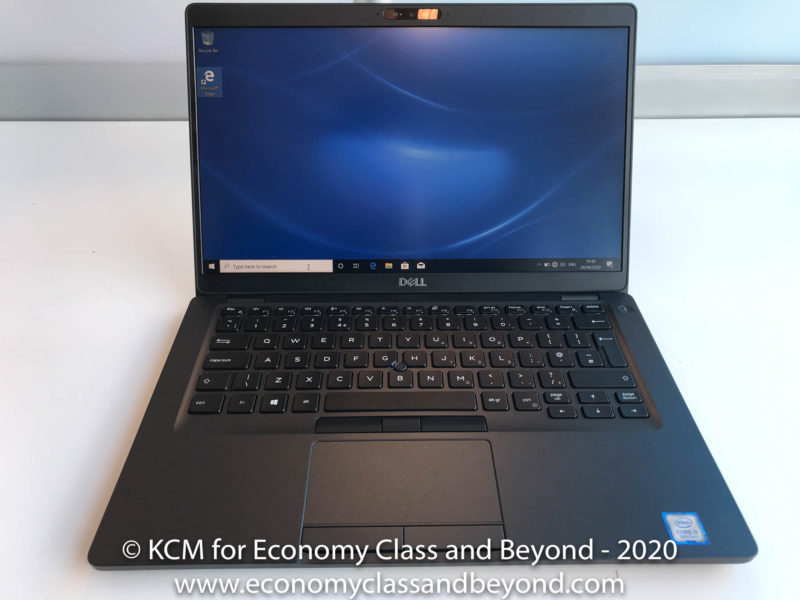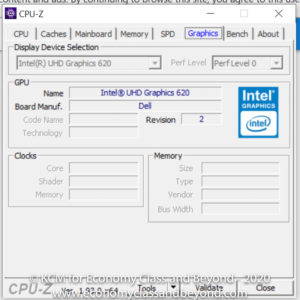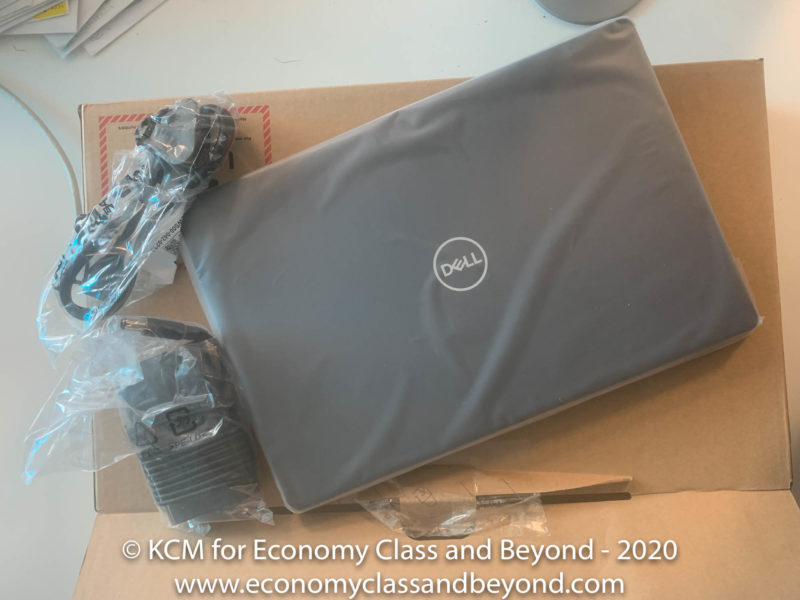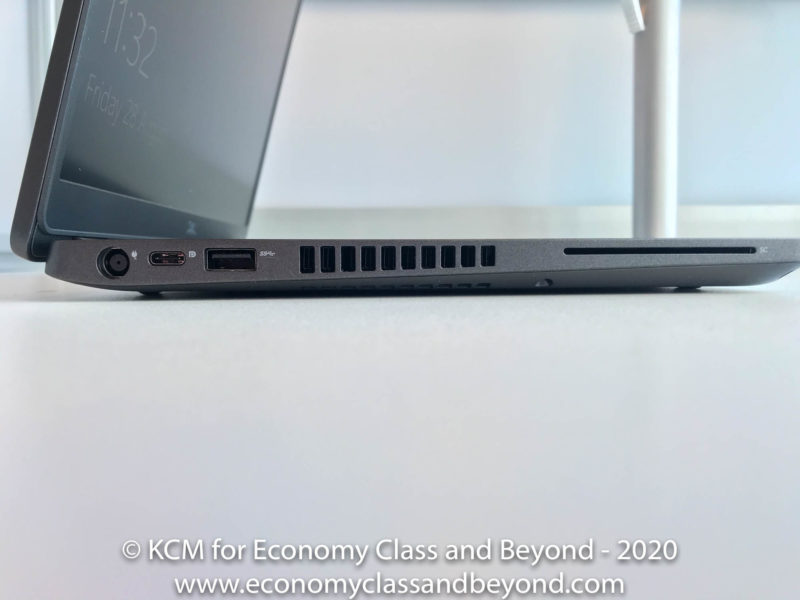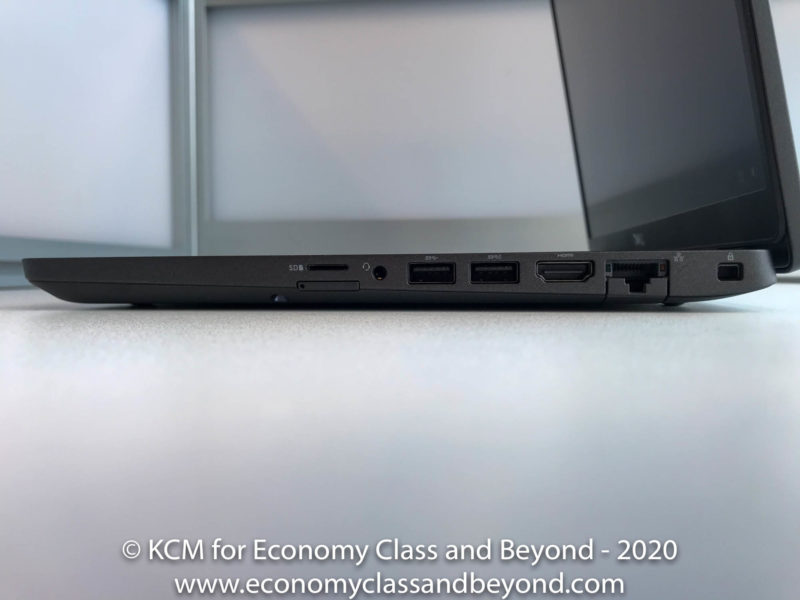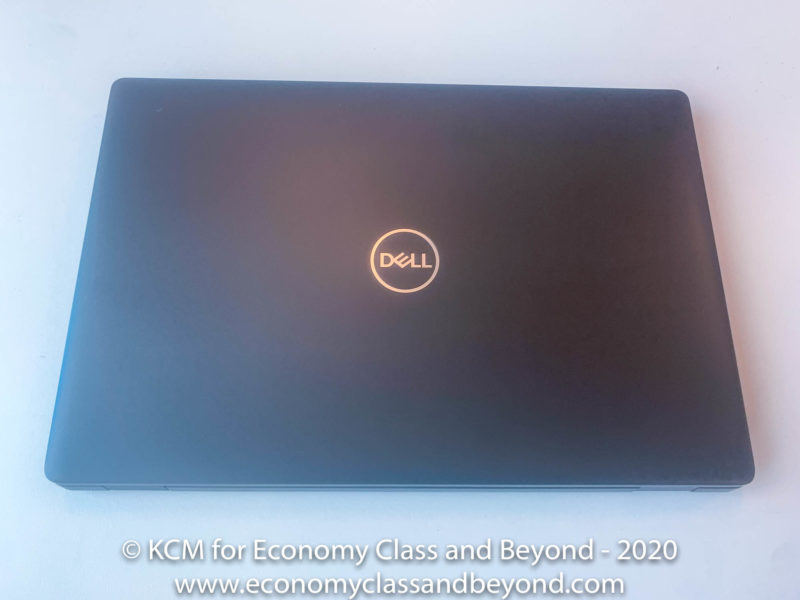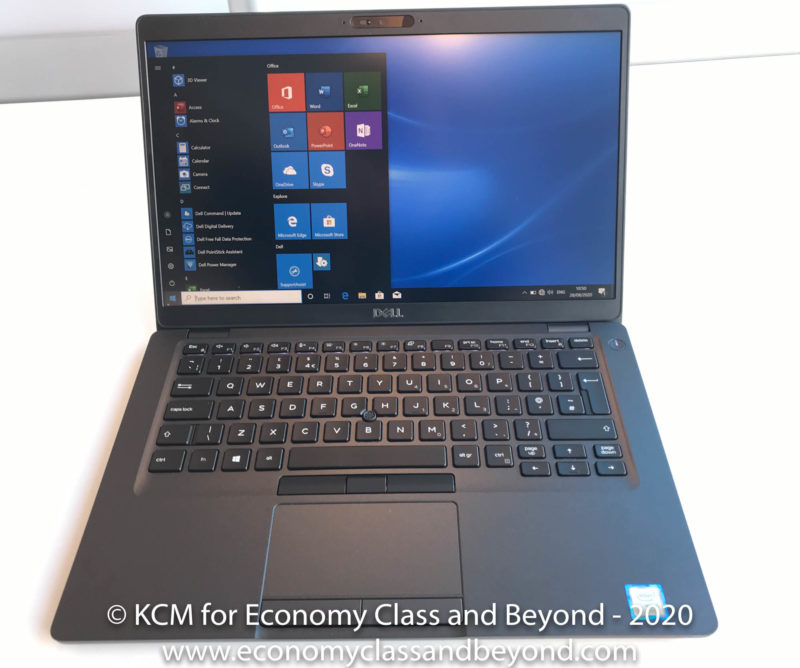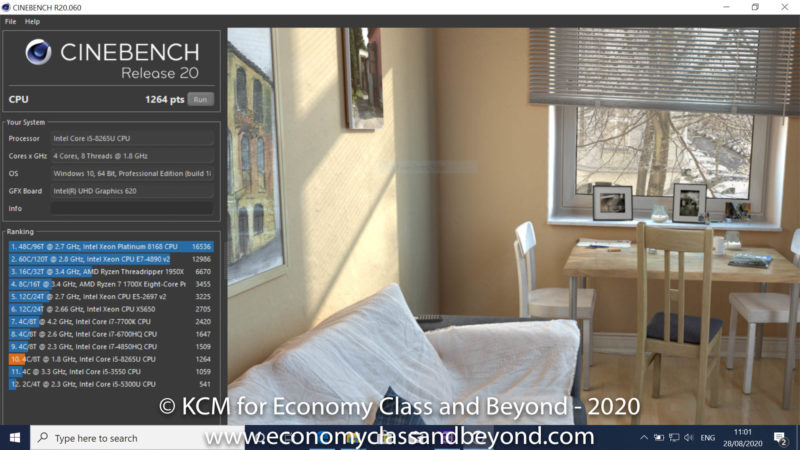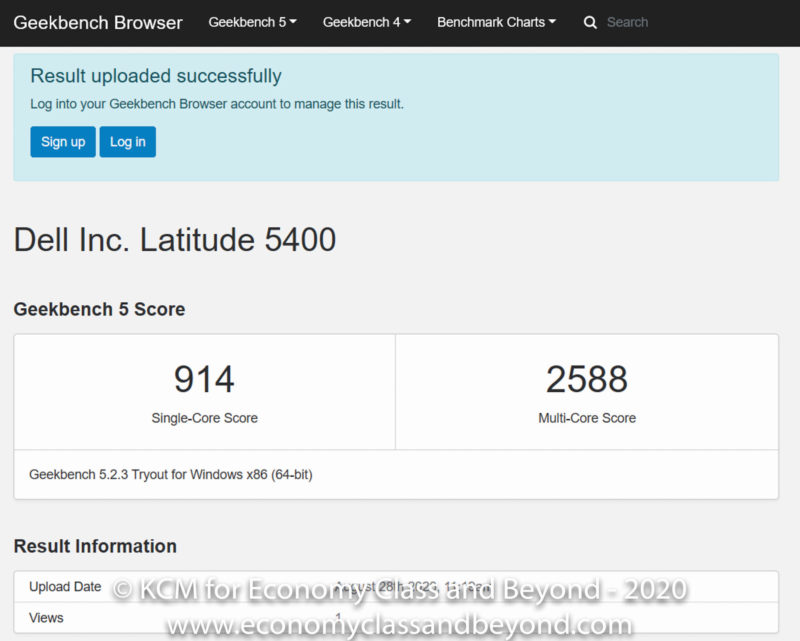Arriving on my lab test bench today is the Dell Latitude 5400 series laptop. Let’s dive in to see what a Dell laptop can offer you.
Like the Surface Laptop review, this is going to be much more of a “hands-on” review rather than full of benchmarks and how it behaves in day to day life.
What is it?
The Dell Latitude 5400 laptop is a mid-level laptop, designed for the corporate road warrior, the worker from home, or the worker who is working at home for some pandemic related reason. It’s a 14” grey square that can help you connect to your office and beyond.
Specifications as tested
With Dell, you can customise to a laptop to your heart’s content, but here’s the one I’ve tested as delivered to me:
- Processor: Intel Core 8th Generation i5-8265U
- Graphics: Integrated Intel UHD 620 Graphics
- Memory: 8Gb memory
- Storage 256Gb nVME Solid State Drive
- 14” Wide Viewing Angle Display with Matt Coating (VA panel)
- Camera and Microphone
As configured, this is on sale at Dell.com for £852+VAT (£1022.40 including VAT). Of course,
In the box
Those of you looking for all the things in the laptop may be disappointed. In the box, you will find:
- The laptop itself
- A 65 Watt Dell Charger
- A power cable
In terms of documentation
- A QuickStart guide
- Safety and regulatory information
Sparse, but enough to get you going.
Looking around the device
Let’s have a quick look at the ports on this laptop
On the left-hand side:
- Dell Power Adaptor
- 1 x USB 3.2 port with Power Delivery & DisplayPort
- 1 x USB 3.1 port with Power Share
- 1 x SmartCard Terminal
On the right-hand side
- 1 x Micro SIM card tray
- 1 x Micro SD socket
- 1 x CombivHeadphone/Audio socket
- 2 x USB 3.1 A ports
- 1 x Full Sized HDMI port
- 1 x RJ-45 port at 100mb/1Gb (with a retractable port)
- 1 x Noble Wedge Lock slot
The casing
Welcome to business-friendly mediocrity. And it is truly mediocre.
It’s another dark grey chassis with a Dell logo stamped on it. It’s not going to offend anyone with its business-friendly looks and features, but it’s hardly the pinnacle of laptop design.
Plastic construction is the order of the day for the construction of the case – so it will survive the odd knock or two. Put it like this, if you throw it in a laptop bag, it won’t need special treatment (as opposed to some laptops I have).
The Screen
I didn’t find the screen to be that bright – compared to some panels I’ve used on other laptops recently. This can be put down to the VA (Vertical Alignment) panel – compared to the IPS panels I’ve been using (Tom’s Hardware has a good primer on the technologies).
If you’re working from home, invest in another screen (and preferably, an IPS display if you’re using it for business use) – your eyes will thank you.
The screen is a 14″ model, displaying in Full-HD (1920 x 1080). As delivered, Windows set this for 150% scaling. Your own scaling tasks apply, should you need to set your own style of workspace.
The screen in this configuration is not a touchscreen, which Dells offers for this laptop.
It was “ok” at displaying content, with reasonable viewing angles from one side of the desk to the other. Just a lot dimmer than some I’ve been using recently. Those with colour-accurate needs should look elsewhere unless you’re going to spend hours calibrating this screen.

Although good enough to enjoy Crab Rave on.
Audio
A surprise here – with some rather punch speakers, able to deliver more than passable treble and bass, good enough for a small room to fill and reasonable enough for conference calls. There is distortion as you ramp up the volume though.
And an odd bit of Crab Rave after work. Or Keiino’s Spirit in the Sky, which made the speakers work rather well.
The Keyboard and TouchPad
I’m actually a fan of this keyboard. The travel seems to be rather comfortable, with a nice bounce to it. The keyboard isn’t that offensive to use (as I’ve done more than a bit of system administration with one of these).
If you’re going to be using this laptop at home – it’s good for hours on end. However, you may want to invest in a keyboard if you find it crammed (and not a £10 cheap one. Invest in good quality keyboard if you’re spending hours typing on it).
It also comes with a trackpad which isn’t bad but doesn’t excel in any way, supporting some multi-touch functions. For those who are lovers of pointing sticks (or “nipples” if you come from the ThinkPad line), there’s one here that is useful if you’re a fan of that input method.
Thankfully, there’s more than enough connectivity on the machine to add a mouse on if that’s your preferred pointing method.
Weight
That laptop comes in a reasonable 1.48 kg (3.26 lb). It’s not heavy to the point where you will notice it in your bag, but it has a presence thanks to its physical size.
Authentication Methods
In Windows, this laptop will support a SmartCard, PIN or Password to gain access to the computer. Those looking for Windows Hello should look for another model – as this laptop does not support it in the configuration being reviewed.
Battery
The laptop comes with 4 Cell 68Whr Capable Battery built-in. Following the modern design language of laptops, the battery is not swappable easily and requires the back of the laptop to be removed to access the battery (remember batteries you could swap out when they went bad? What halcyon days…).
The battery should see you easily through a business day if doing light tasks. If you’re doing heavy tasks (or running Windows update), expect the battery to drain in around five to six hours or so.
Expandability
There is a USB-C/Thunderbolt port on the device, for those of you who need to expand. This allows you to connect a dock to it, so you can connect monitors and other devices to it. Again – check if your laptop comes with either port – Thunderbolt allows a lot more bandwidth compared to USB-C (USB 3.2).
In the configuration delivered, the laptop I have has USB-C 3.2 on, allowing Displayport to be used, as well as Power Delivery (allowing you to charge with a USB-C Charger, a USB-C Hub or Dock)
Otherwise, it has three USB 3.1 A ports to plug-in peripherals, onboard networking as well as Wi-Fi.
In Testing
Let’s do a Cinebench just to please those who love benchmarks. As usual, I’m running Cinebench R20, because everyone loves a Cinebench score.
The laptop runs an Intel i5-8265U (ultra-low voltage) CPU. It has four processing cores and eight threads for multitasking. With a base clock of 1.6ghz, boosting to 3.9Ghz, I’m expecting a reasonable performance in this benchmark.
And that’s what we get, with a Cinebench score of 1254. To compare, the Surface Laptop 3 I use clocks in at 1563.
Running GeekBench, we get a score of 914 in Single-Core, 2588 in Multi-Core
YouTube was more than happy running through Microsoft Edge with a few tabs open.
In Microsoft Office tests, applications flew and were able to function as appropriate without any worries.
Use Cases
As I’ve eluded to, this laptop will fit into the business world nicely, allowing you to connect to the office suit nicely. It will playback YouTube videos fine thanks to the Intel IGP. It’ll do web conferencing fine thanks to its built-in (if feeble) webcam.
It’ll sit in Microsoft Office all day, crunching spreadsheets in Excel, formatting in Word, creating poison in PowerPoint and will allow you to e-mail life away in Outlook without breaking too much into a sweat, whist you have Spotify in the background to keep you going.
The CPU allows some creative tasks, but the screen on this thing makes it more of an edge use case (maybe some light Adobe Photoshop, Premier or Lightroom – but be careful of the colour correction you’ll need to make). Anything that requires more than a short burst in the creative applications (which can be CPU bound), I would consider looking elsewhere (or at plug an external screen in and have a good cup of coffee to hand).
Gaming is something that this laptop won’t excel in, thanks to the Inbuilt Graphics Processor. If you pair it with a Thunderbolt External GPU dock, then there’s a very valid option – however, you’ll have to weigh up the costs of an external GPU box + Graphics card, rather than looking for something more powerful in the first place.
A laptop your IT Team and Asset Managers will love and one you’ll put up with to get your job done…
Laptops like The Dell Latitude 5400 are a rare purchase for the home user – rather, they’re brought by the pallet loads by IT departments for their users.
These laptops are brought, then imaged in mass batches at once, have the management tools put on them, and reboxed up so they can go out to those who need them, be they in the office, on the road or working from home.
And if you get one of these, you won’t be annoyed or disappointed, you’ll just accept that you need to use something like this for your job.
If you’re picking one up for home new, there are plenty of other options that are a lot less mediocre than this. But if you do pick one up for home, you’ll want to wait 2-3 years from release, when these are being disposed of by corporates and are being resold on the second-hand markets (such as eBay, Morgan Computers and so on), as you can get a lot of laptop for £852+VAT (£1022).
I’m going to be blunt – this laptop is mediocre as hell. It won’t have the performance of the Alienware gaming laptops, nor will have the rattly plastic of Inspiron consumer-level equipment. It won’t have the design flair of an HP Envy or MacBook, but it won’t let you down like that £400/$400 laptops you picked up on a whim at a supermarket.
And that’s the point of laptops like these – fleet laptops. They’re distributed to help workers do their job. They’re not there to play games or flight sims, rather the boring business world they live in.
And the Dell Latitude 5400 excels in this.
Welcome to Economy Class and Beyond – Your no-nonsense guide to network news, honest reviews, with in-depth coverage, unique research as well as the humour and madness as I only know how to deliver.
Follow me on Twitter at @EconomyBeyond for the latest updates! You can also follow me on Instagram too!
Also remember that as well as being part of BoardingArea, we’re also part of BoardingArea.eu, delivering frequent flyer news, miles and points to the European reader.
